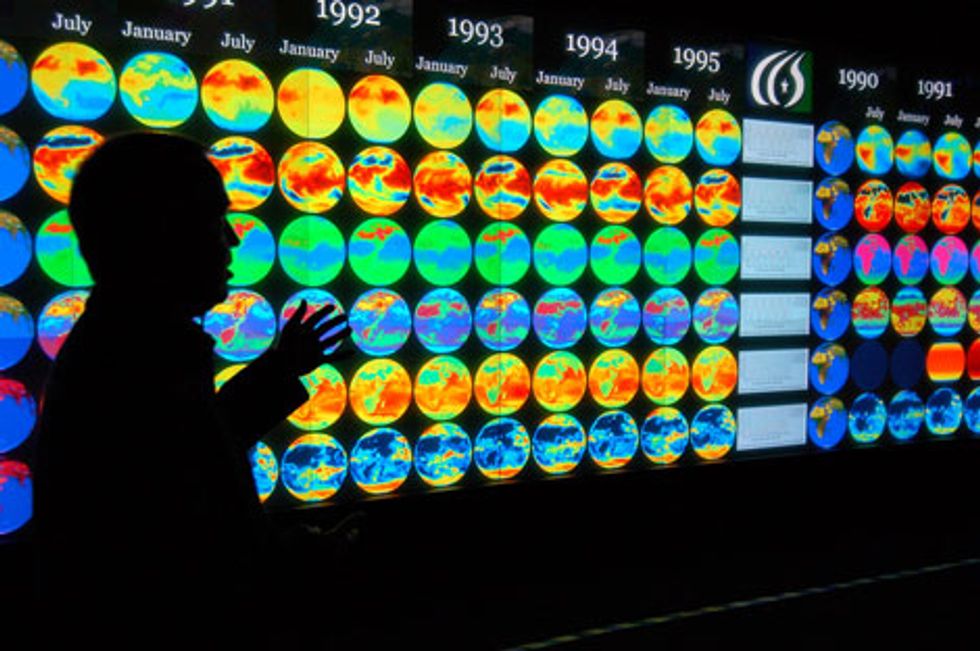For more on Cold War travel sights, see If It’s Tuesday, This Must Be Los Alamos
All photos courtesy Nathan Hodge and Sharon Weinberger
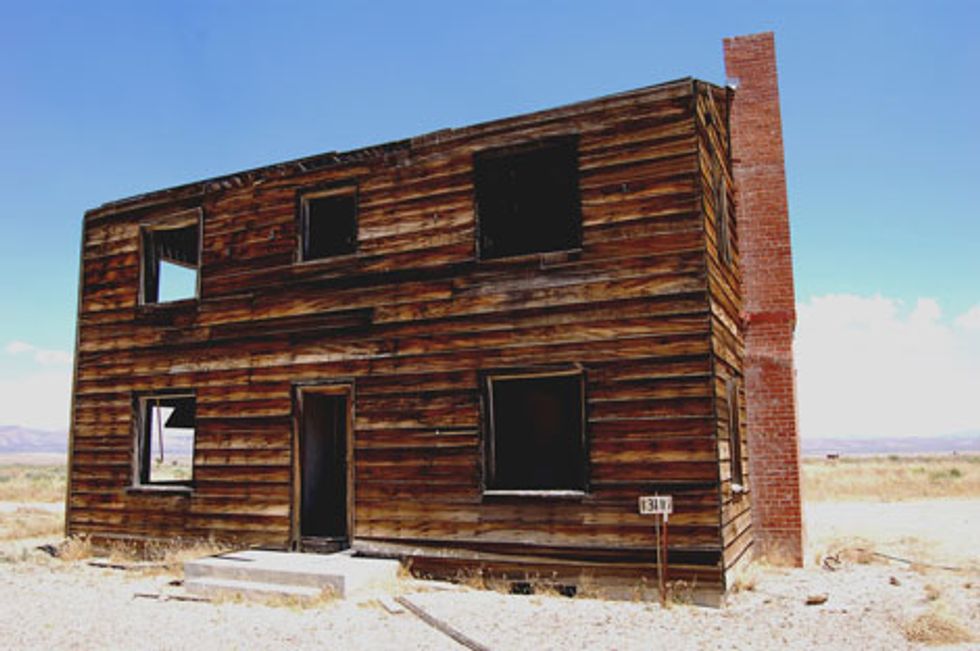
The 1955 Apple-2 bomb was designed for ”civil effects testing” at the Nevada Test Site. The government built make-believe houses and stores and filled them with mannequin families to understand how civilian infrastructure would be disrupted by a nuclear blast. This shack is a survivor of Apple-2.
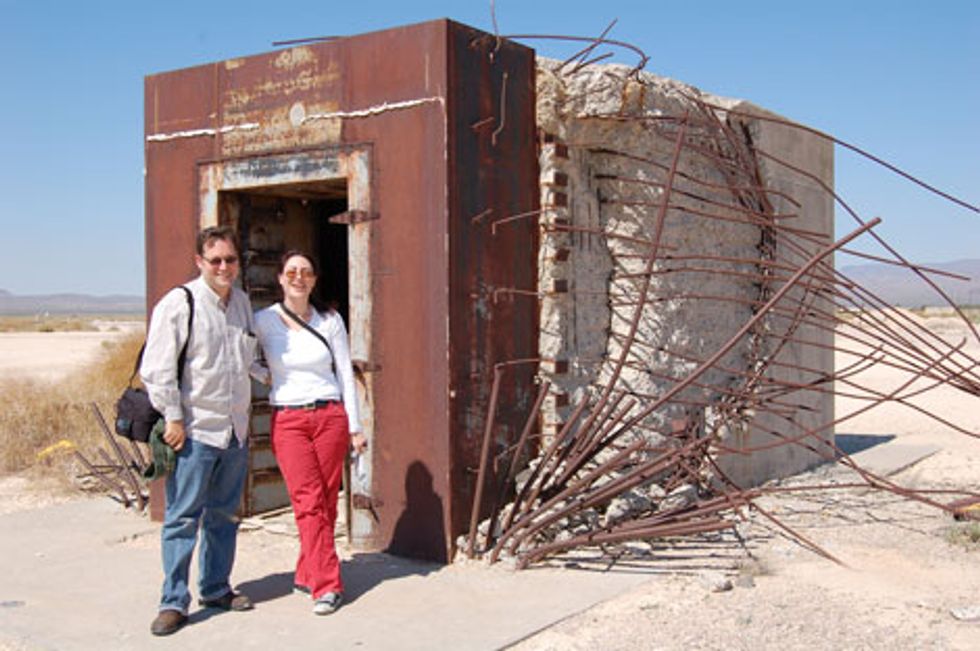
Defense journalists Nathan Hodge and Sharon Weinberger, on a research tour of the Nevada Test Site for their nuclear history travelogue, A Nuclear Family Vacation. They pose at Frenchman Flat, a dry lake bed about 75 miles northwest of Las Vegas, in front of the Mosler bank vault. The vault was created specifically for the 1957 Priscilla test, which evaluated nuclear bombing effects on commercial and civilian construction.
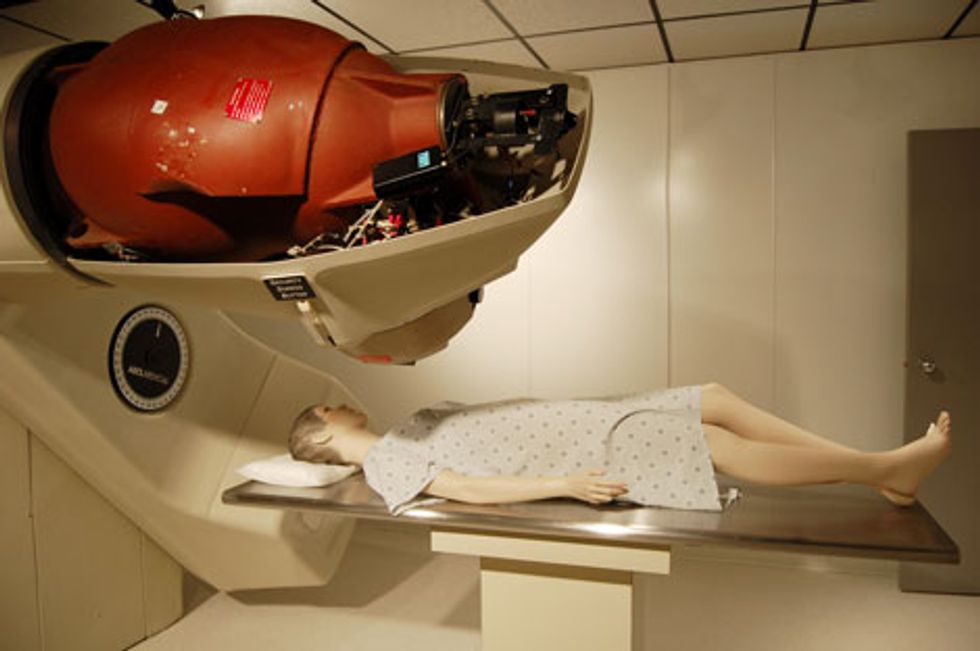
Sandia National Laboratories, in Albuquerque, which holds and tests a lot of the nation’s nuclear weapons, has been plagued with many scandals. This picture showcases some of the lab’s tamper-proofing technology, much of which—shown inside the radiology machine’s housing—was devised to protect against the theft of radiological materials.
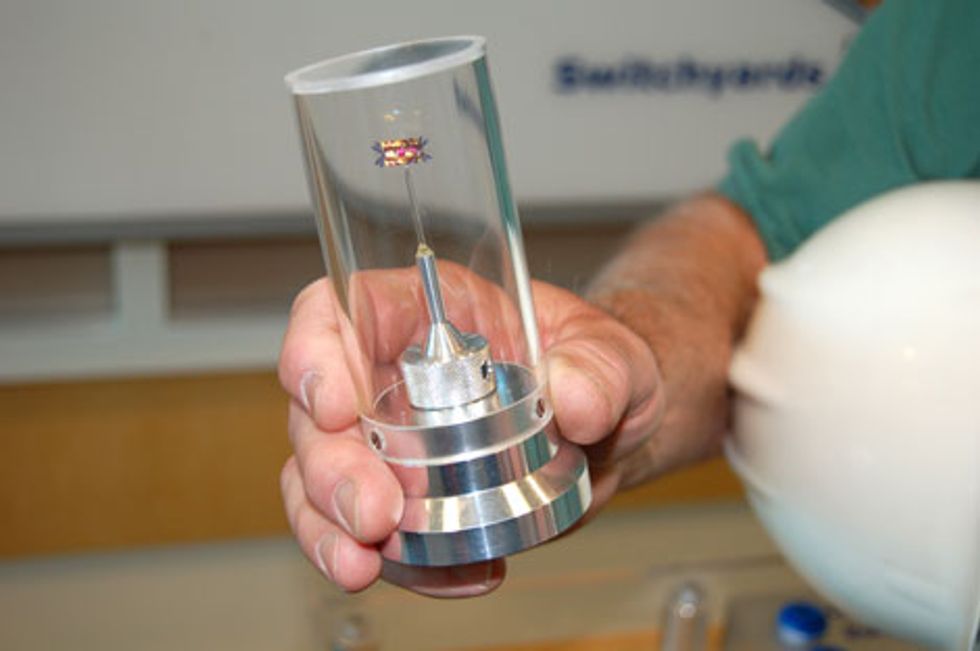
Laser target at the National Ignition Facility (NIF), Lawrence Livermore National Laboratory, in California. This model of a fusion ”target”—a tiny pellet containing a mixture of tritium and deuterium that (in theory) would be compressed by the NIF beam and create a fusion reaction—is part of the educational display at the entrance to the NIF. ”It’s a helpful tool for persuading visitors to support NIF funding,” says Hodge.
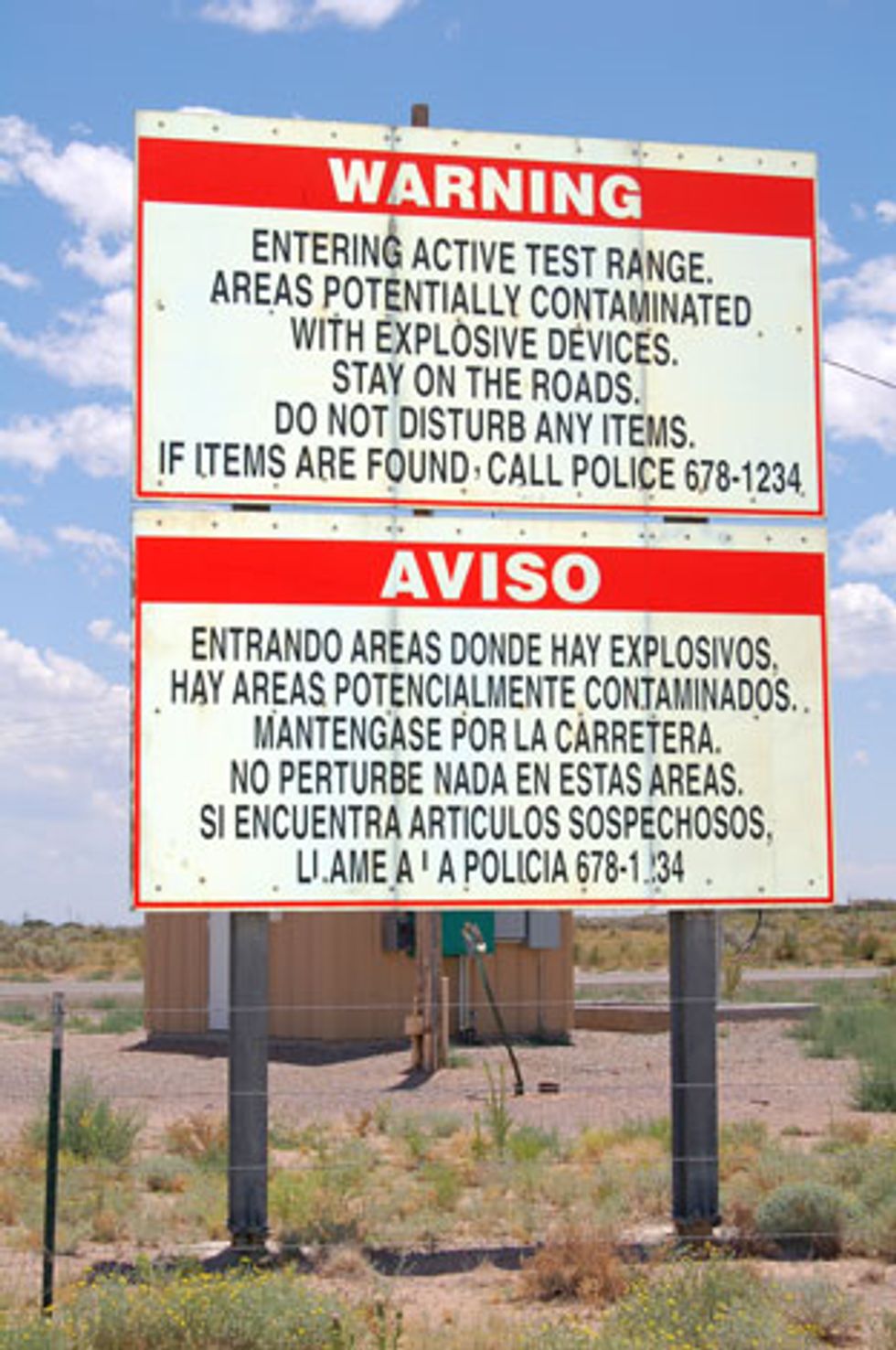
Stallion Gate, at White Sands Missile Range, New Mexico. The Trinity Test Site (where the world’s first nuclear weapon was exploded on 16 July 1945) is located on this desert military base, about 90 minutes from Albuquerque. Visitors park by the Stallion Gate and walk to the remains of the test site.
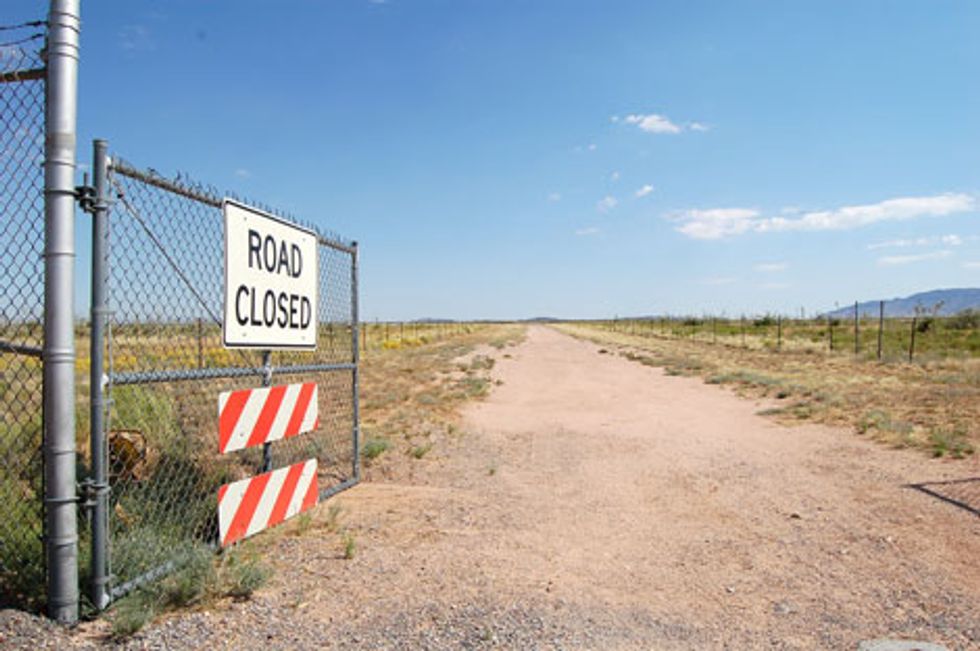
Entrance to the Trinity site. The site is open to the public twice a year, on the first day of April and the first day of October.
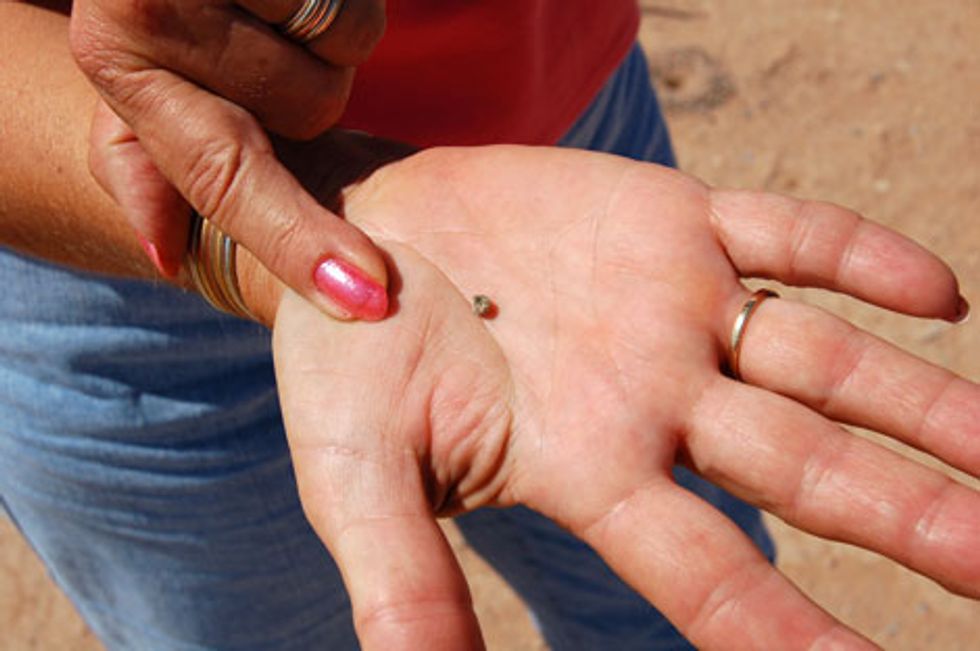
Weinberger holds a piece of trinitite, the glassy blue-green rock that was created when the explosion’s heat fused the desert sand into glass. The stuff is still mildly radioactive, but trinitite can be found nowhere else on Earth, and nuclear tourists have helped themselves to so much of the material for souvenirs that little remains.
The EVEREST PowerWall at Oak Ridge National Laboratory, in Tennessee, is a computer visualization facility. EVEREST stands for Exploratory Visualization Environment for Research in Science and Technology. Oak Ridge, once in the weapons business, now focuses on basic science and technology. The 9-meter-wide, 2.4-meter-tall screen can display 35 million pixels of information and is now being used as a tool to model climate change.
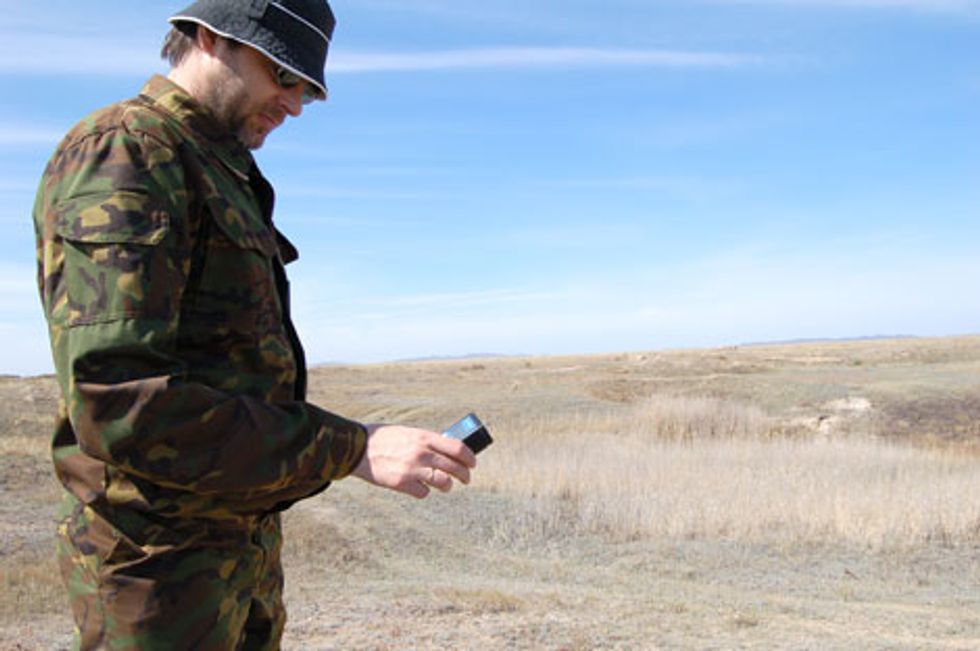
A dosimeter reading at ground zero. Yuri Strlchuk, the journalists’ official guide at the Semipalatinsk Test Site in Kazakhstan, takes a dosimeter reading. Strlchuk is an employee of Kazakhstan’s National Nuclear Center, in Kurchatov. Since testing stopped, nuclear tourism is one of the main ways the ailing facility makes money.
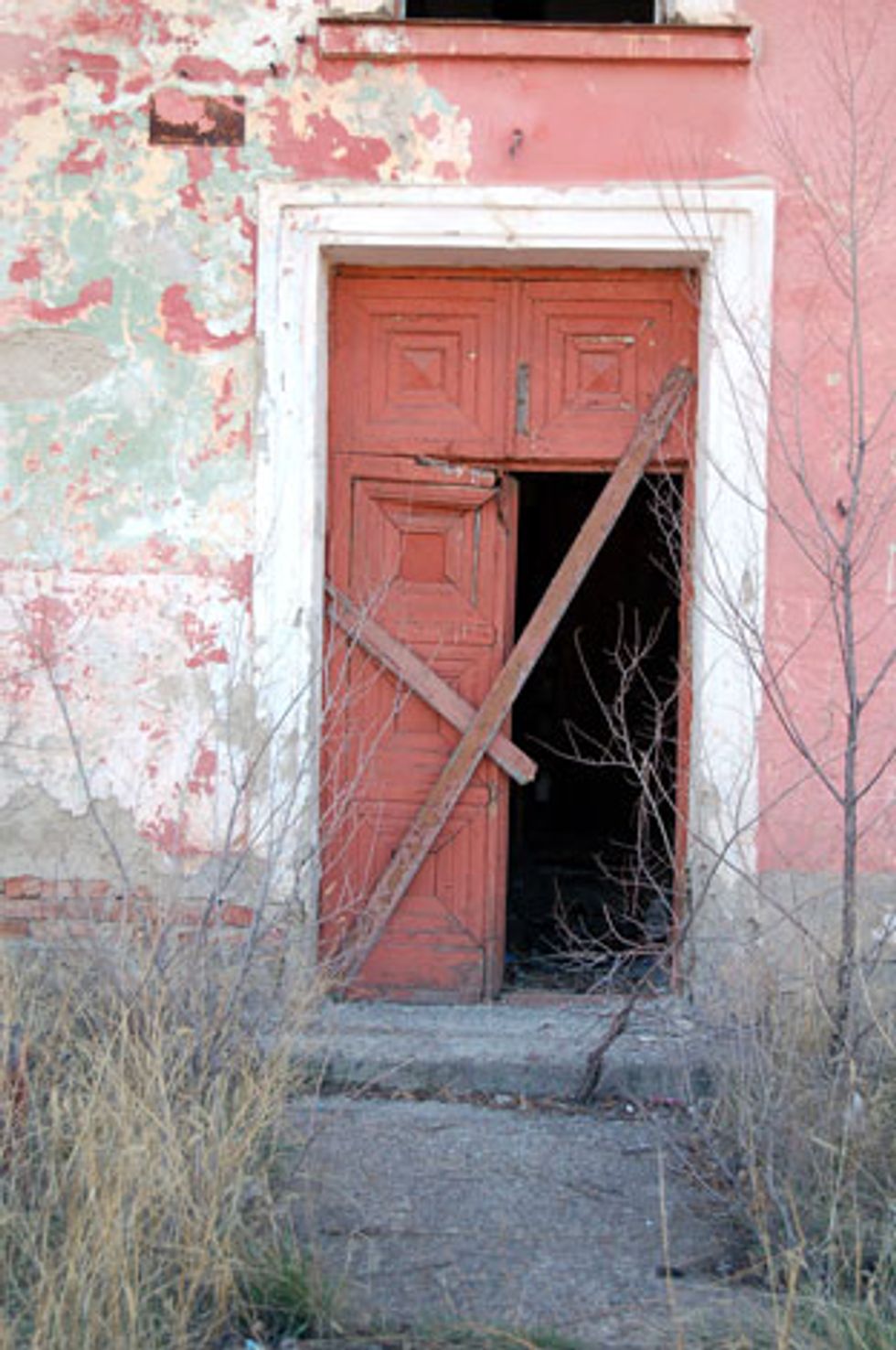
A nuclear ghost town. Kurchatov, adjoining the Semipalatinsk Test Site, which has been inactive since 1991, was once a bustling scientific city but is now largely abandoned. It was one of Russia’s famous ”closed cities,” where much of the scientific research that resulted in the nuclear testing at Semipalatinsk occurred.
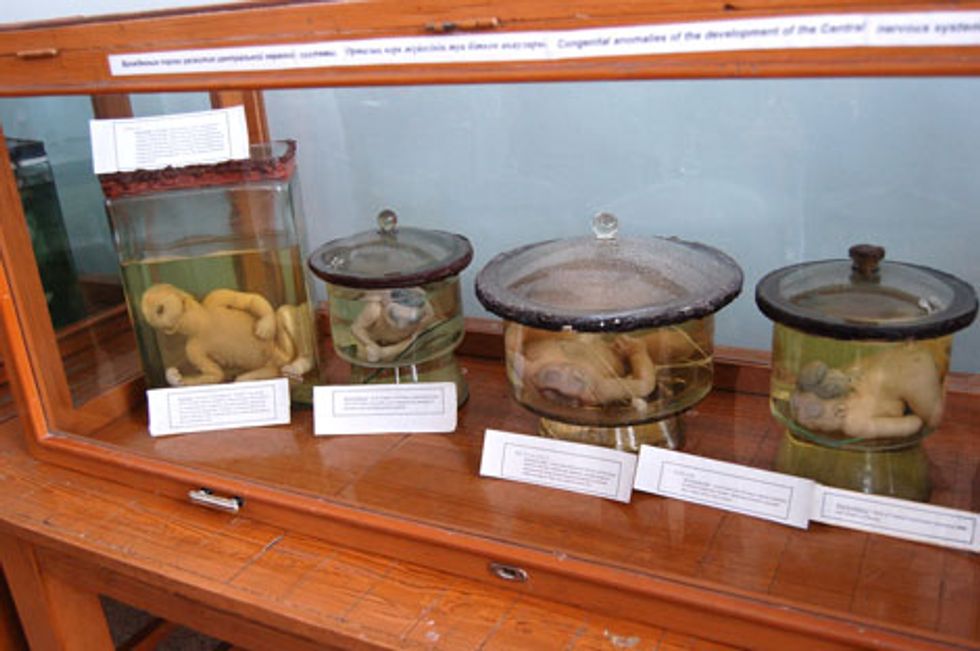
The little shop of horrors at the Semipalatinsk medical museum, in eastern Kazakhstan. Despite the Soviet military’s awareness of the disastrous effects of radiation on the population, close to 500 tests were conducted near Semipalatinsk between 1949 and 1989. The deformed fetuses in these jars were harvested from Semipalatinsk maternity hospitals. One, known as the Cyclops, owes its name to the solitary eye located in the center of its forehead.
For more on Cold War travel sights, see If It’s Tuesday, This Must Be Los Alamos
The Conversation (0)
